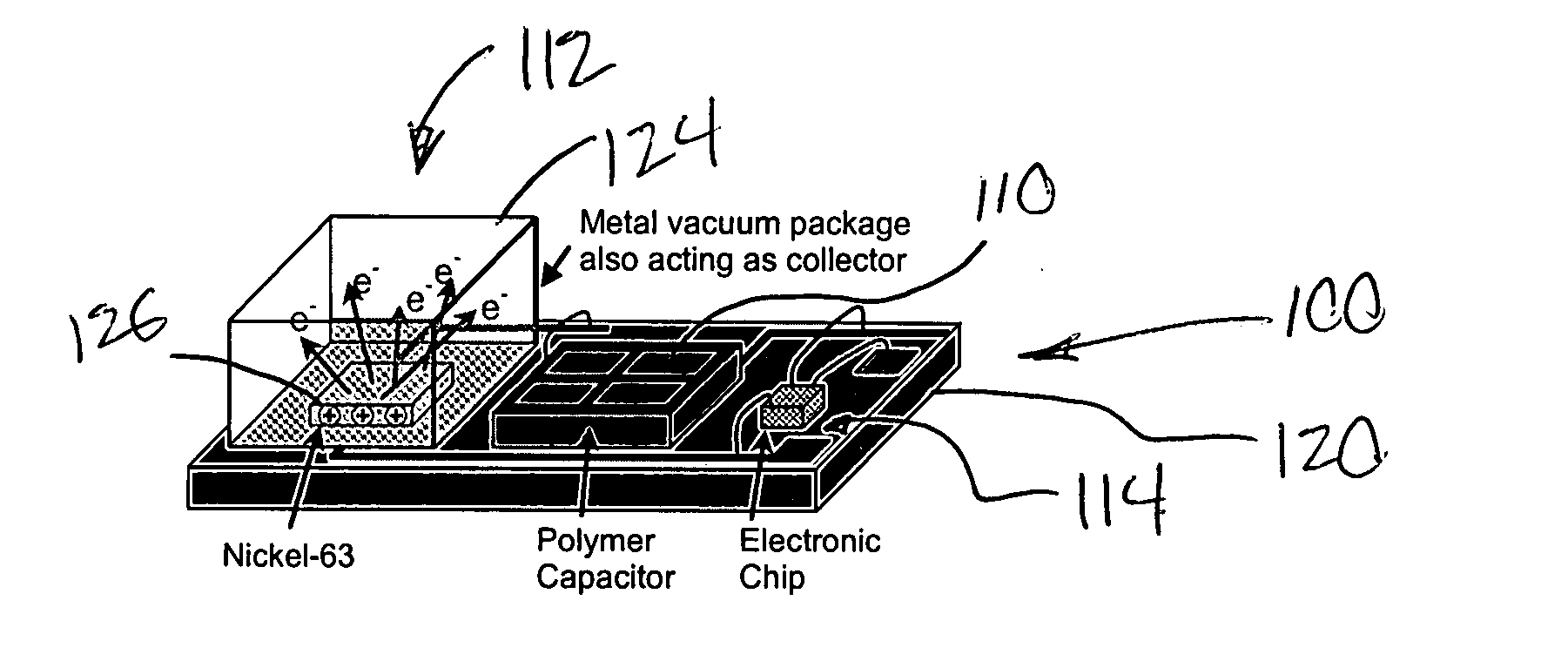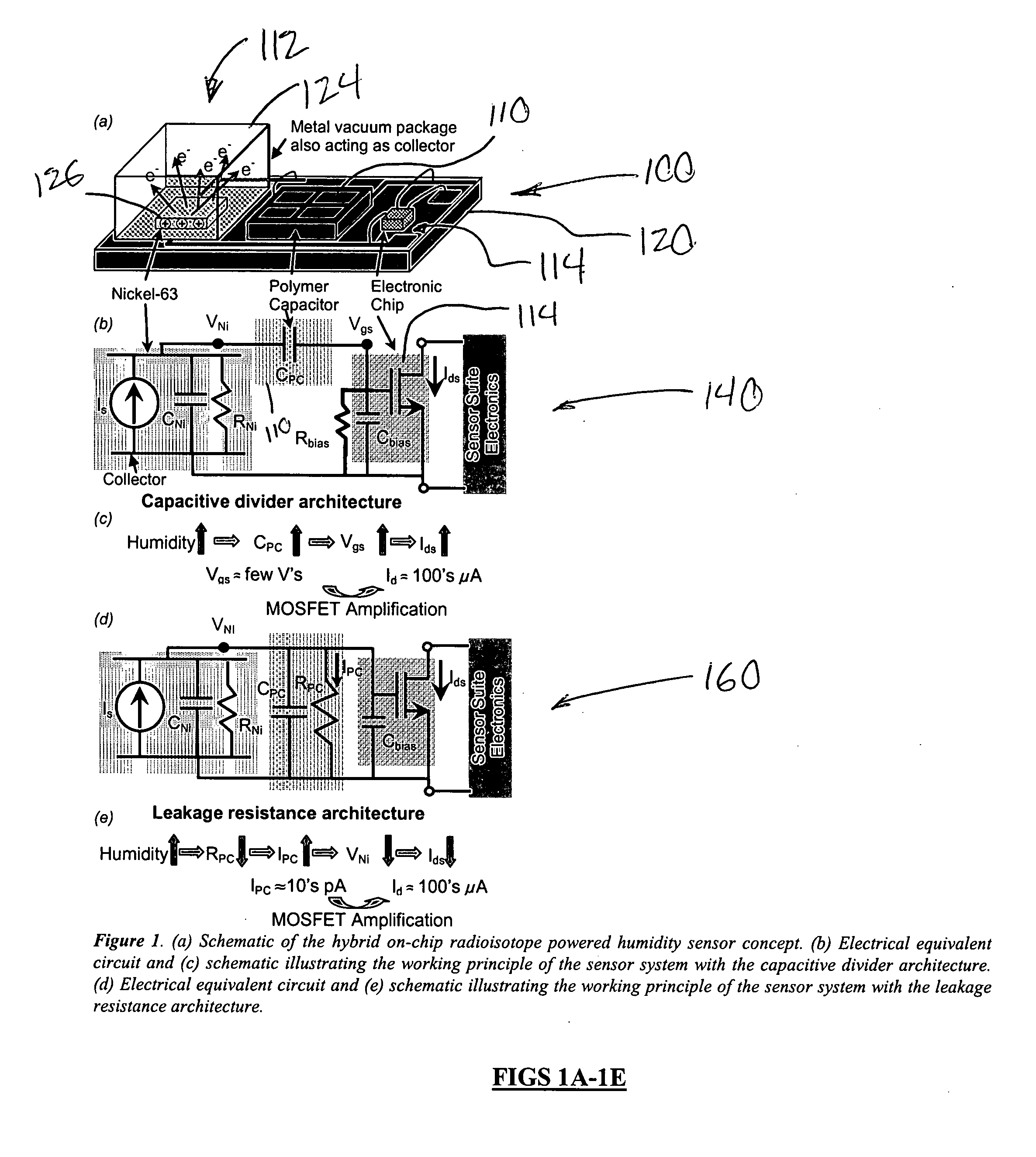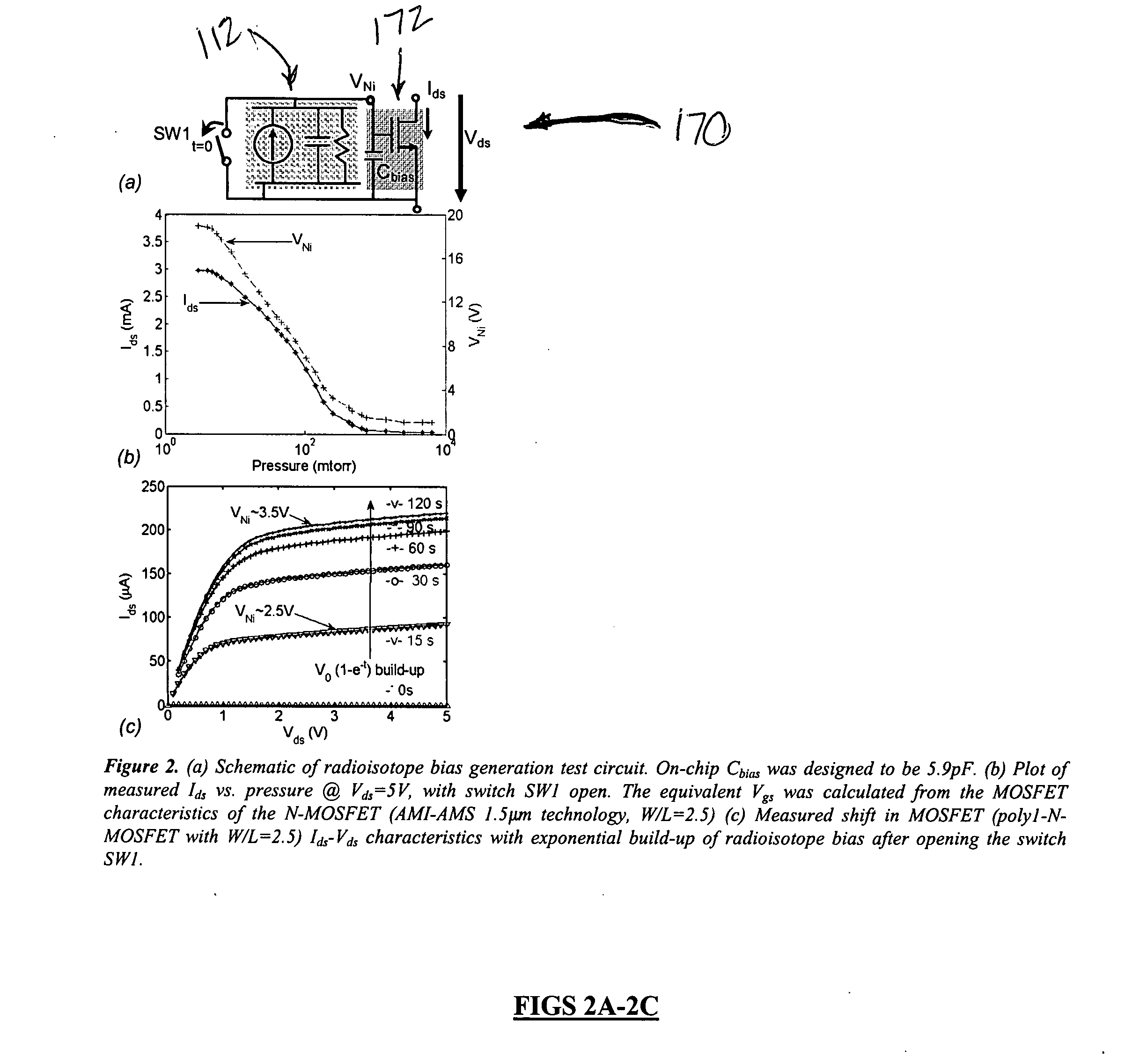Self Powered Sensor with Radioisotope source
a self-powered sensor and radioisotope technology, applied in the direction of instruments, measurement with semiconductor devices, nuclear engineering, etc., can solve the problems of long operating lifetime, high cost of battery monitoring and replacement, and complex signal processing for conversion of optical signals into electrical signals, so as to increase the lifetime of battery powered sensor suites and save battery power
- Summary
- Abstract
- Description
- Claims
- Application Information
AI Technical Summary
Benefits of technology
Problems solved by technology
Method used
Image
Examples
Embodiment Construction
[0052]As shown in FIGS. 1a-1e, hybrid on-chip radioisotope powered humidity sensor 100 comprises a polymer capacitor CPC 110, a radioisotope source 112 and a transistor, preferably a MOSFET 114. Sensor 100 in prototypes has been configured on a substrate or printed circuit board 120 which supports a conductive metal package or box-shaped shield 124 that functions as a collector for charge emitted from a radioisotope emitter such as the Nickel-63 thin film segment 126. Radioisotope source 112 effectively provides a current source IS, shunted by an intrinsic capacitance CNi and resistance RNi, across which are developed a radioisotope source voltage VNi, as shown in FIG. 1b.
[0053]Radioisotope source 112 generates voltage biases employed to power polymer capacitor CPC 110 for the self-powered sensor 100. Self-powered humidity sensor 100 can significantly extend the operating lifetime of battery powered wireless sensor suites. There are two capacitor biasing architectures. Leakage resi...
PUM
 Login to View More
Login to View More Abstract
Description
Claims
Application Information
 Login to View More
Login to View More - R&D
- Intellectual Property
- Life Sciences
- Materials
- Tech Scout
- Unparalleled Data Quality
- Higher Quality Content
- 60% Fewer Hallucinations
Browse by: Latest US Patents, China's latest patents, Technical Efficacy Thesaurus, Application Domain, Technology Topic, Popular Technical Reports.
© 2025 PatSnap. All rights reserved.Legal|Privacy policy|Modern Slavery Act Transparency Statement|Sitemap|About US| Contact US: help@patsnap.com



